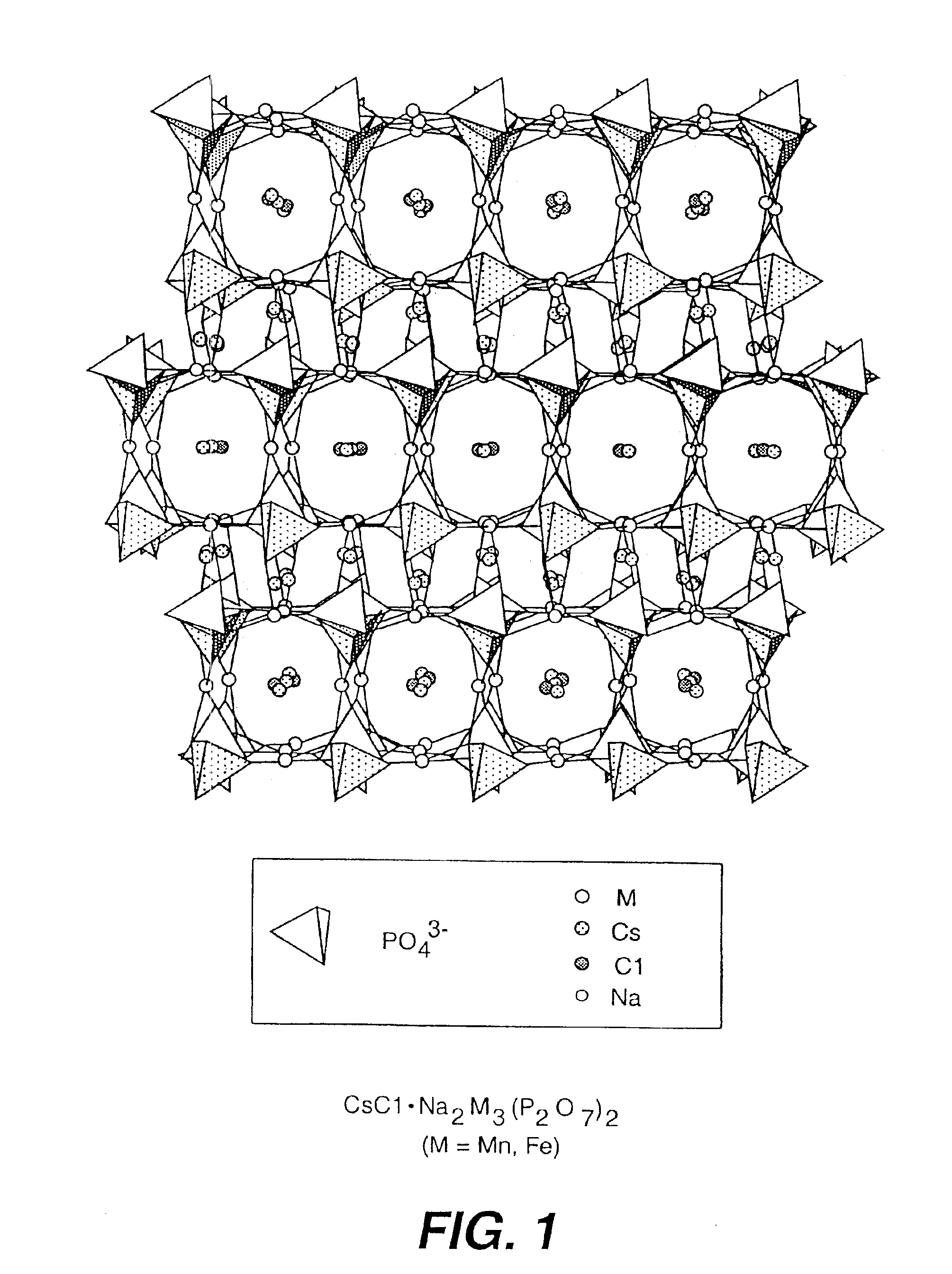Salt-templated microporous solids
a technology of microporous solids and salt, which is applied in the direction of silicates, metal/metal-oxide/metal-hydroxide catalysts, arsenic compounds, etc., can solve the problems of reducing the effectiveness of such materials in novel applications, the inability to readily remove templating agents from the structure, and the loss of market share of chemical and refining industries. , to achieve the effect of stable framework and attractive chemical properties
- Summary
- Abstract
- Description
- Claims
- Application Information
AI Technical Summary
Benefits of technology
Problems solved by technology
Method used
Image
Examples
example 1
[0082]The ability of a salt-template to be removed from a microporous composition of the present invention was demonstrated. In particular, a typical abstraction experiment was conducted, in which 100 mg of the “CuPO” embodiment of a microporous solid of the present invention was added to 15 ml of distilled water. The mixture was then stirred for approximately 10 hours at room temperature.
[0083]After stirring, the solid changed its color from light green to white in about 90 minutes, indicating the loss of the Cu—Cl bond due to chloride leaching. The resulting solid formed a very fine powder, and also showed a small concentration of cesium with a trace amount of potassium through EDAX (energy dispersive analysis by x-ray). The residual cesium and potassium suggests the following replacement reaction:
(Cs3Cl3).K2Cu3(P2O7)2(s)+nH2O(aq)→2KCl(aq)+CsCl(aq)+Cs2Cu3(P2O7)2.nH2O(s)
[0084]The residual cesium is believed to correspond to the amount of monovalent cations necessary to balance the ...
example 2
[0085]The ability of a polycrystalline microporous solid of the present invention to be re-intercalated with a salt after washing was demonstrated. In particular, the templating salt of the “CuPO” embodiment was removed by the process of Example 1. Once removed, the solid was re-intercalated with a chloride salt. In particular, the solid was re-intercalated by immersing the solid in a 4 molar potassium chloride salt solution.
[0086]After re-intercalation, EDAX results showed that the residual cesium remaining from Example 1 was not present. The lack of such residual cesium suggests that the following reaction of combined ion-exchange and re-intercalation likely occurred:
PUM
| Property | Measurement | Unit |
|---|---|---|
| pore size | aaaaa | aaaaa |
| temperature | aaaaa | aaaaa |
| temperatures | aaaaa | aaaaa |
Abstract
Description
Claims
Application Information
 Login to View More
Login to View More - R&D
- Intellectual Property
- Life Sciences
- Materials
- Tech Scout
- Unparalleled Data Quality
- Higher Quality Content
- 60% Fewer Hallucinations
Browse by: Latest US Patents, China's latest patents, Technical Efficacy Thesaurus, Application Domain, Technology Topic, Popular Technical Reports.
© 2025 PatSnap. All rights reserved.Legal|Privacy policy|Modern Slavery Act Transparency Statement|Sitemap|About US| Contact US: help@patsnap.com



